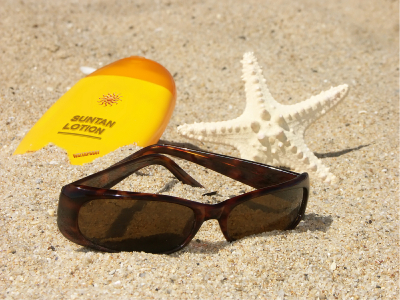 |
If you’re like many people who stand perplexed at the drugstore counter wondering which sunscreen is the best sunscreen, then you may also be aware of the ongoing debate amongst individuals between which is better – physical or chemical sunscreens. If formulated correctly and with the correct ingredients in adequate concentration, both types of sunscreen can provide effective protection against the sun’s UVA and UVB rays. Where opinions differ lies in personal preference and some concerns with safety. |
How Do Physical and Chemical Sunscreens Differ?
Technically a sunscreen is composed of sun filters. These are agents that either block, deflect or reflect UV rays. And, many sunscreens often use a combination of both physical and chemical blockers to achieve optimal results.
Physical filters include zinc oxide and titanium dioxide. They work by sitting on top of skin and either reflecting or scattering UV rays. Zinc oxide can block against both UVA and UVB rays, covering the whole spectrum, while titanium dioxide only delivers protection from UVB rays. Both ingredients work well, but have a tendency to leave a white cast on skin. Newer, micronized versions or those that contain nanoparticles appear much more clear on skin.
Chemical filters include a range of ingredients including avobenzone (also known as Parsol 1789), oxybenzone, Tinosorb M, Tinosorb S, Mexoryl SX and Mexoryl XL amongst others. These agents work by interacting with the skin’s top layer to absorb UV rays and convert them into energy before they can harm skin. Chemical sunscreens tend to use a combination of ingredients to protect against the full spectrum of UV rays. While older chemical filters tended to protect well against UVB rays, they often didn’t deliver much in the way of UVA protection. Newer filters such as Mexoryl and Tinosorb now deliver UVA protection so look for sunscreens containing those. Avobenzone also offers UVA blocking capability, but one problem is that it tends to degrade upon exposure to light. If you are using a sunscreen that contains avobenzone ensure that it is stabilized with an ingredient such as Octocrylene as found in Anthelios sunscreens.
Which One’s Right For You?
Now that you know how physical and chemical sunscreens, how do you decide which one’s right for you? If you have sensitive skin, then a purely physical blocking sunscreen with zinc oxide or titanium dioxide might be the best choice. These ingredients are well tolerated and tend not to irritate skin. They may also be ideal for use in children who tend to have more sensitive skin. While effective, the downside is that physical sunscreens can look white on skin – particularly problematic if you are not fair skinned. Tinted formulations can be helpful if this is the case. Fallene formulates a range of physical sunscreens including Cotz SPF 58 and Fallene Lipcotz SPF 45.
If you are darker skinned, you may want to opt for a chemical sunscreen. Newer sun filters such as Mexoryl XL, Mexoryl SX, Tinosorb M and Tinosorb S allow for lighter formulations that go and stay on clear. As well, these sunscreens are available in a range of formulations including sprays, lotions and creams so it’s easy to find one that works for your skin type.
As with any sunscreen, how you apply will affect its efficacy. For maximum effect, apply sunscreen 15 to 20 minutes prior to UV exposure to ensure that it is absorbed sufficiently to protect. If you have a tendency to sweat or will be engaged in water activities, look for water resistant or very water resistant formulations, which will give you between 40 to 80 minutes of protection. And, as directed on most sunscreen packages, reapply every 2 hours and more frequently if you’ve been exposed to water.


